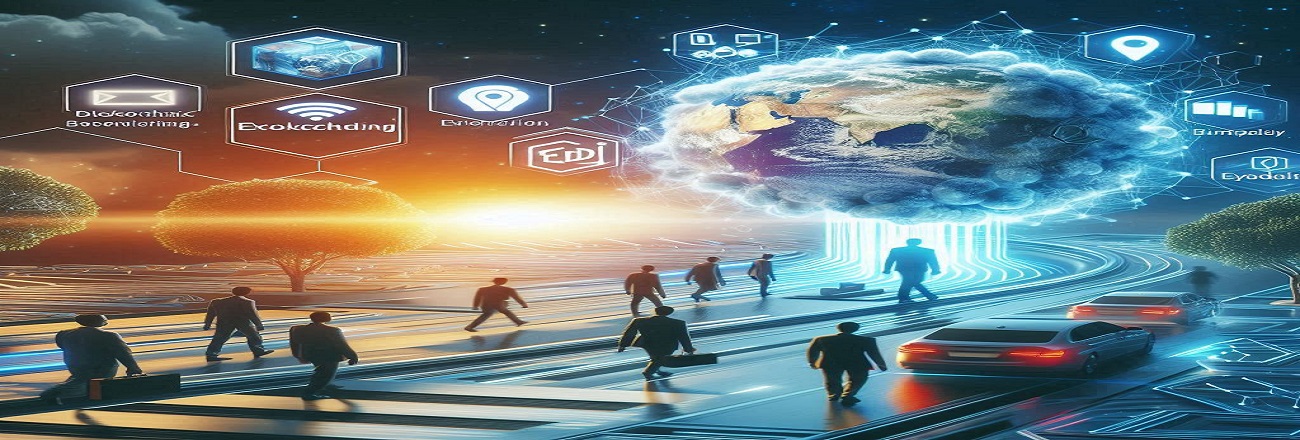Future Trends in EDI Services: Moving Towards AI and Blockchain
Updated On 15 Mar, 2025

Future Trends in EDI Services: Moving Towards AI and Blockchain
The digital era is witnessing an unprecedented transformation, with technologies like Artificial Intelligence (AI) and Blockchain reshaping industries. Electronic Data Interchange (EDI), a system that has been the backbone of B2B transactions for decades, is not exempt from this evolution. This blog explores the future trends in EDI services, focusing on how AI and Blockchain are poised to redefine the landscape.
The Current State of EDI
EDI enables businesses to exchange documents electronically in a standardized format, streamlining operations and reducing manual effort. Industries like retail, healthcare, and logistics heavily rely on EDI for transactions such as purchase orders, invoices, and shipping notices.
Challenges in Traditional EDI Systems
- Limited real-time visibility.
- Complex integrations.
- Dependency on predefined standards and formats.
AI in EDI: Enhancing Efficiency and Insights
Artificial Intelligence brings transformative capabilities to EDI, addressing many of its limitations:
Automated Data Mapping
AI can automate the mapping of EDI documents to internal systems, reducing manual errors and saving time.
Predictive Analytics
Leveraging AI for analyzing historical EDI data can predict trends, improve inventory management, and enhance decision-making.
Intelligent Error Detection
AI algorithms can identify and correct anomalies in data exchanges, ensuring smoother transactions.
Natural Language Processing (NLP)
NLP-powered tools can convert unstructured data into EDI-compliant formats, making integration with non-EDI systems seamless.
Blockchain in EDI: Securing Transactions
Blockchain technology introduces a layer of transparency, security, and decentralization that complements EDI systems:
Immutable Audit Trails
Every transaction recorded on a blockchain is immutable, ensuring transparent and verifiable records.
Decentralized Data Exchange
Blockchain eliminates the need for a central authority, reducing dependency on intermediaries and potential single points of failure.
Smart Contracts
These self-executing contracts automate business processes, enabling faster and error-free transactions.
Enhanced Data Security
Blockchain’s cryptographic mechanisms protect sensitive EDI transactions from breaches.
The Convergence of AI and Blockchain in EDI
The integration of AI and Blockchain in EDI systems presents a powerful combination:
- AI can analyze transaction data on the blockchain to offer actionable insights.
- Blockchain’s transparency can enhance the trustworthiness of AI-driven recommendations.
- Together, they can create a self-learning and self-auditing EDI system that evolves with business needs.
Challenges and Considerations
Adopting AI and Blockchain in EDI services isn’t without challenges:
Cost of Implementation
The initial setup for integrating these advanced technologies can be high.
Interoperability Issues
Ensuring seamless communication between legacy systems and modern technologies requires robust solutions.
Regulatory Compliance
Blockchain’s decentralized nature may conflict with regional data protection regulations.
Skill Gap
Businesses need skilled professionals to manage and optimize these technologies.
Conclusion
The future of EDI lies in leveraging AI and Blockchain to create smarter, more secure, and highly efficient systems. Businesses that embrace these technologies stand to gain a competitive edge, with improved operational efficiency, better decision-making, and enhanced trust among trading partners.
As we move towards a connected and digital-first world, the synergy between AI, Blockchain, and EDI is set to redefine the way businesses interact and grow.
Related Articles
Future Trends in EDI Services: Moving Towards AI and Blockchain
| 👉 Did you find this blog helpful? Share it with others who might find it valuable! |
| 📞 Contact Us: +1-877-840-6546 | Get in Touch Today! |
